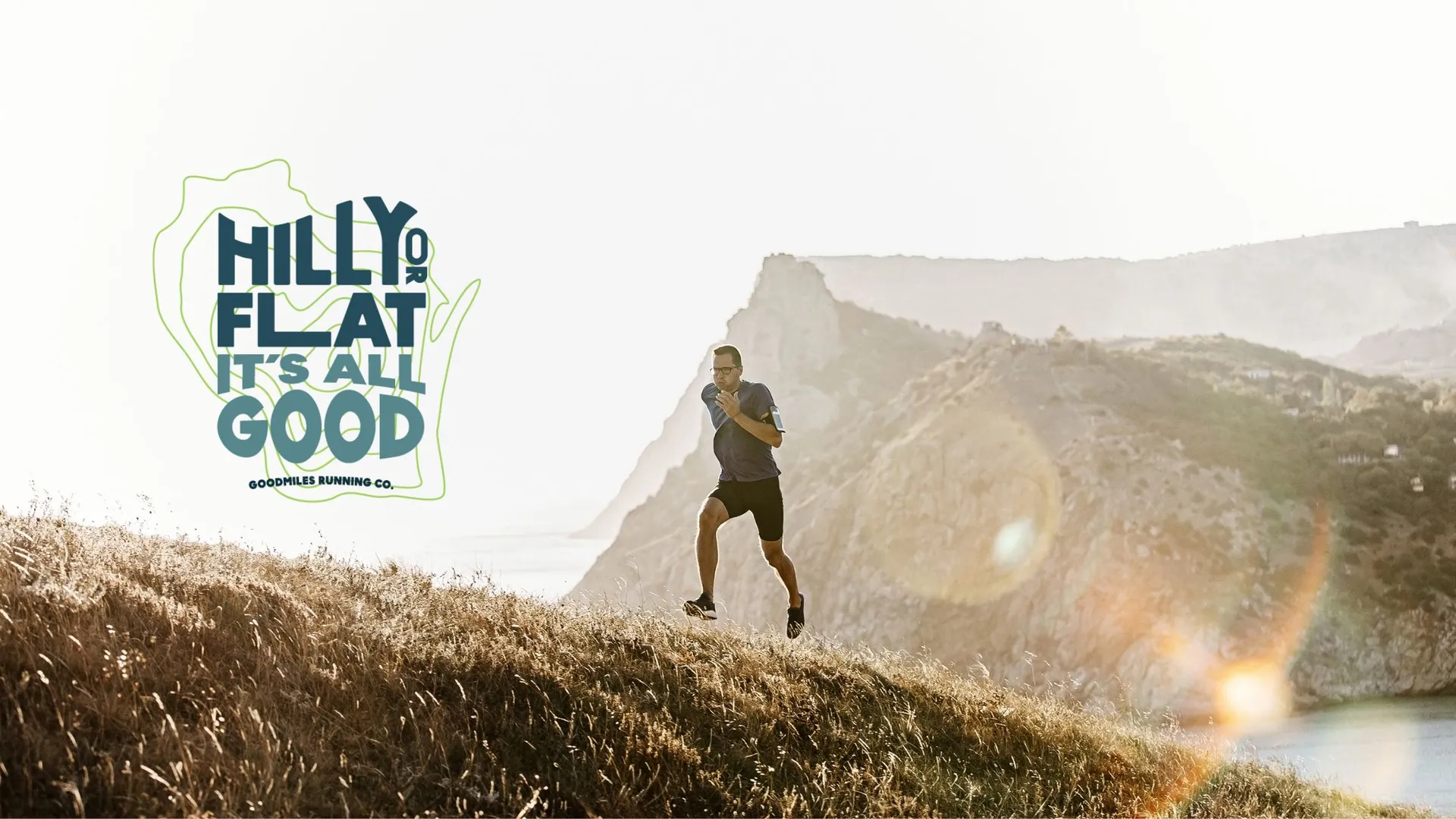If you watched the athletes on the Paris Olympics Marathon course, hill training may be on your mind!
Hills can be a powerful tool in your training, whether you’re prepping for a race with significant elevation, or simply looking to build strength and resilience. Both uphill and downhill running offer unique challenges, while also offering numerous benefits when used strategically.
Let’s dive into the key aspects of hill training that can help you harness the power of elevation and improve your strength and efficiency as a runner.
Benefits of Uphill Running
Strength and Power Development: Uphill running introduces a functional strength building stimulus to the quadriceps, gluteals, hamstrings, and calves. The increased demand for these muscles also enhances their power capacity.
Cardiovascular Fitness: Running on hills simply requires more effort. Routinely utilizing hill training offers a great boost to your overall fitness.
Running Form and Efficiency: Uphill running encourages a shorter stride, quicker step rate, and a natural forward lean from the ankles. These elements can translate into improved running efficiency on flat terrain as well.
Benefits of Downhill Running
Muscle Strength and Control: Downhill running isn’t just about letting gravity do the work. It requires significant muscle control, especially in the quadriceps muscles, to safely manage speed and navigate terrain. While it may feel easier than running uphill, the greater muscle contraction force required makes downhill running surprisingly more taxing.
Uphill Running Mechanics: What to Know
Stride and Body Position: Uphill running typically shortens your stride and increases your step rate. The knees drive higher, and the body naturally leans forward.
Joint and Tissue Stress: The mechanics of uphill running generally result in reduced stress on the knee.
Research published in 2024 (Van Hooren, et al.) shows a reduction in joint force at the patellofemoral (kneecap) joint by 27% on a 3% grade, and by 46% with runners on a 7% grade.
These results are quite different when investigating load around the ankle. In the same study, load on the Achilles tendon was increased by 29% (3% grade) and by 55% (7%) grade.
Downhill Running Mechanics: Key Differences
Stride and Body Position: Downhill running can feel exhilarating but also a bit risky, especially on steep terrain. There is a great deal of variability in the mechanics of downhill running. However, it commonly involves a longer stride, greater knee extension, and a heel-first landing pattern.
Joint and Tissue Stress: The combination of a longer stride and higher quadriceps muscle demand during downhill running increases the load on the knee joint up to 43% on a 7% grade.
And while the calf muscles still work hard to help with the controlled descent, the strain on the Achilles tendon decreases by 27%, compared to running on flat ground.
Preparing for Hill Training
Getting Started: Hill training can provide excellent conditioning. When introducing more elevation into your runs, begin with gentle slopes and shorter durations. Gradually increase the intensity and duration as your body adapts.
Support Your Training: Consistent strength and mobility exercises are crucial for managing the added joint and tissue loads encountered during hill running.
Keep Track: Keep track of your hill training, noting the grade, speed, segment time, and total volume. Gradual progression is the key to avoiding overload, and injury.
Applying Hill Training to Your Routine
Beginners: Start with one hill session per week on a gentle slope with short time segments.
Intermediate and Experienced: Gradually increase the hill’s grade and duration, incorporating both uphill and downhill running.
Recovery and Progression: Allow adequate recovery between hilly runs or hill workouts. Stay attuned to your body’s response and continue any progressions gradually.
Maximize Your Running Potential with Hill Training: Final Thoughts
Hill training offers a unique and effective way to build strength, improve running efficiency, and boost fitness. Uphill and downhill running each have distinct benefits and challenges that, when balanced appropriately, can enhance your overall performance.
Remember to approach this training gradually and consistently, staying attentive to how your body responds. Engaging in strength training and mobility practices will support your healthy running- both on level surfaces and on hills.
Meet our Guest Writer & Expert: Carrie Truebenbach

Carrie Truebenbach, PT, DPT, MS, UESCA Run Coach is a physical therapist, health coach, run coach, and yoga teacher. Her private practice True Stride Physio & Coaching specializes in care for runners. Carrie blends her formal training and her 20+ years of professional experience to provide injury management services, alongside running gait analysis, run performance and coaching services. As a former Division 1 athlete and current trail running enthusiast, Carrie is passionate about running, and sharing the sport with others. She loves working with runners to achieve longevity in the sport as they pursue their running goals!
Check out her website here: https://www.truestridecoach.com/
Reference:
Bontemps, B., Van Hooren, B., & Khassetarash, N. (2020). Eccentric muscle actions in downhill running: implications for injury prevention and performance. European Journal of Sport Science, 20(8), 1045-1053.
Khassetarash, N., Bontemps, B., & Van Hooren, B. (2022). The impact of hill running on knee joint mechanics and achilles tendon load. Journal of Biomechanics, 89(3), 1205-1214.
Van Hooren B, van Rengs L, Meijer K. (2024). Per-step and cumulative load at three common running injury locations: The effect of speed, surface gradient, and cadence. Scand J Med Sci Sports, Feb 34(2): e14570.
